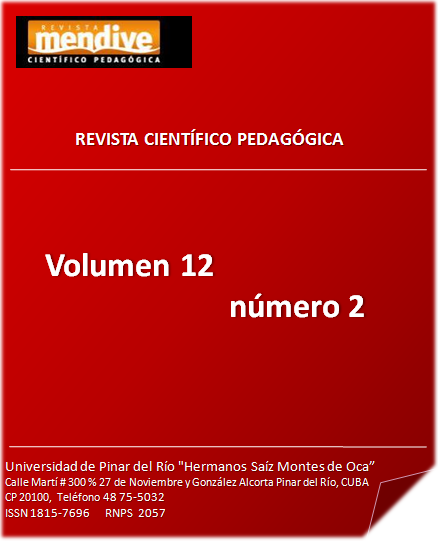Viabilidad de Python en la enseñanza de la programación
Contenido principal del artículo
Resumen
Descargas
Detalles del artículo
Citas
J.M. Zelle: “Python as a first language”, , 1999.
Guido van Rossum: “Computer Programming for Everybody”, , 1999. [3] L. Grandell, M. Peltomäki, R.J. Back, T. Salakoski: “Why complicate things?: introducing programming in high school using Python”, , pp. 71—80, 2006.
L. Mannila, M. De Raadt: “An objective comparison of languages for teaching introductory programming”, , pp. 32—37, 2006.
F. Georgatos: “How applicable is Python as first computer language for teaching programming in a pre-university educational environment, from a teacher's point of view?”, arXiv preprint arXiv:0809.1437, 2008.
N. Efford, T. Jenkins: “AND NOW FOR SOMETHING COMPLETELY DIFFERENT: LEARNING PROGRAMMING WITH PYTHON”, , pp. 81—94, 2008.
Autodesk Maya. 2012. URL www.autodesk.es/maya.
J.M. Zelle: Python Programming: An Introduction to Computer Science. Franklin, Beedle & Associates, Inc., 2004.
J. Elkner: “Using Python in a high school computer science program”, , pp. 2000—01, 2000.
J. Elkner, A. Downey, C. Meyers: How to Think Like a Computer Scientist: Learning with Python.. 2001. URL http://www.ibiblio.org/obp/thinkCSpy/. [11] F. Stajano: “Python in education: Raising a generation of native speakers”, , pp. 2000—01,2000.
J.A. Miller: Promoting Computer Literacy Through Programming Python. 2004. [13] T. Jenkins: “The First Language—AC ASE FOR Python?”, , 2003.
V. Ceder, N. Yergler: “Teaching Programming with Python and PyGame”, Apresentado na PyCon, 2003.
W. McGugan: Beginning Game Development with Python and Pygame. Will McGugan, 2007.
B.N. Miller, D.L. Ranum: “Teaching an introductory computer science sequence with Python”, , 2005.
J.D. Oldham: “What happens after Python in CS1?”, Journal of computing sciences in colleges, pp. 7—13, 2005.
R.M. Siegfried, D. Greco, N. Miceli, J. Siegfried: “Whatever Happened to Richard Reid s List of First Programming Languages”, Information Systems Education Journal, pp. 24, 2012.
Octavio Lavastida, Amaury E. del Valle: “Y del Linux qué (I y II)”, Juventud Rebelde. Edicion digital., 2011. URL http://www.juventudrebelde.cu/suplementos/informatica/2011-10-05/y-dellinux


